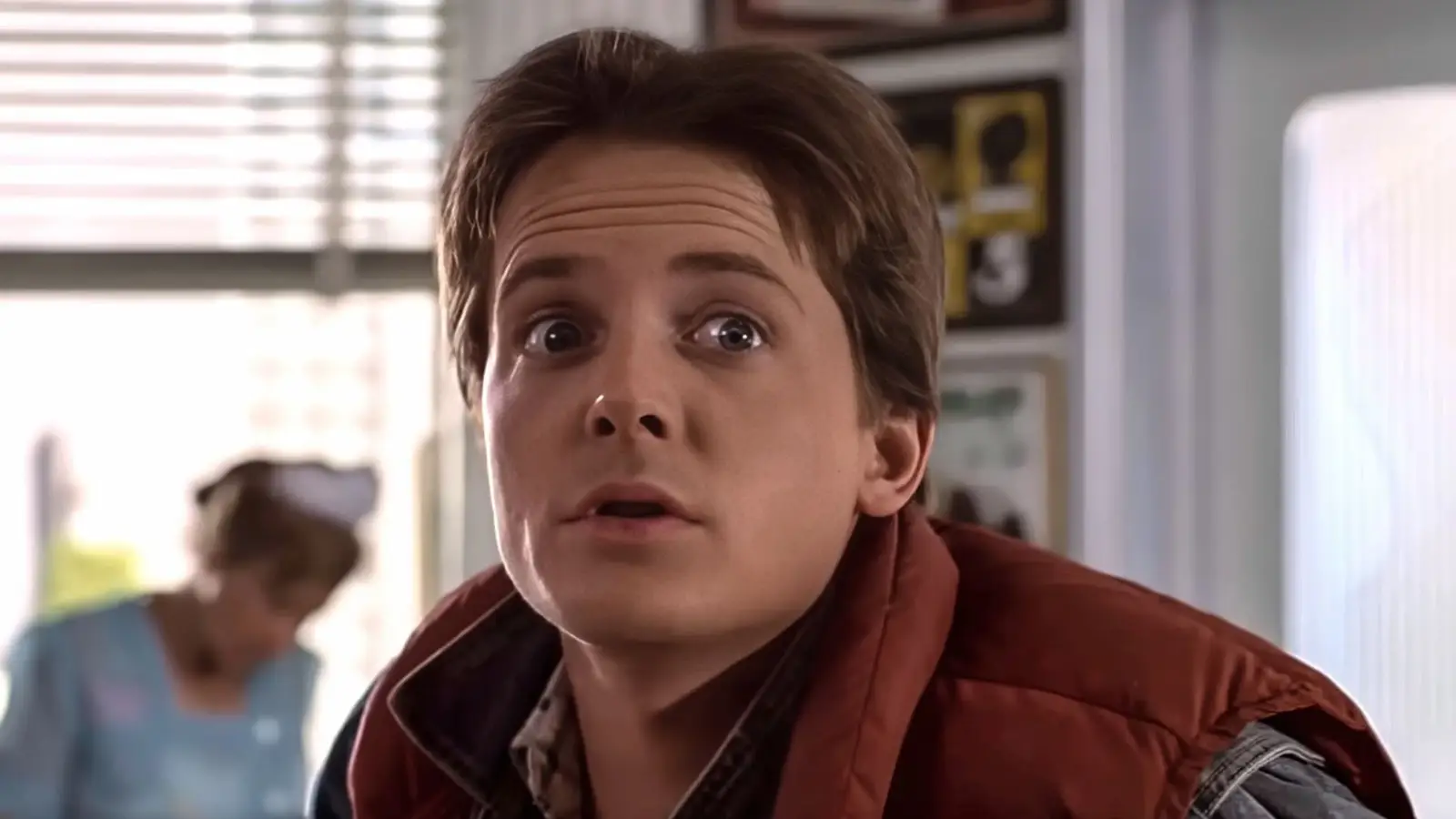Copyright Screen Rant

Back to the Future filmmaker Robert Zemeckis used the franchise to make several predictions about future scientific advancements. With the first Back to the Future movie returning to theaters this year for its 40th anniversary, fans have a chance to remember what they like best about Marty McFly and his time-traveling adventures. When rewatching the Back to the Future trilogy, fans notice many strange things in the futuristic scenes that have actually come to fruition in the real world. While, at the time, many of these things seemed more fiction than science, this is one great sci-fi film that actually got many things right in predicting future technology. Personal Drone Technology There was a scene in Back to the Future II where Marty McFly was walking along and saw what looked like a ridiculous moment. A drone was flying overhead, walking a leashed dog down the street. The future, in this franchise, has a way of using drones to do the jobs a regular human would do, making their lives easier. Drones have been around for many years, with the first ones created during World War I. They were first tested in 1917 and flown in 1918. During the Vietnam War, they were used to drop leaflets for military operations and propaganda. However, for Back to the Future Part II in 1989, personal drones seemed like a sci-fi gimmick. Cut to 2006, 15 years after Back to the Future Part II hit theaters, and the FAA issued the first commercial drone permits. By 2016, consumer-based drones were a regular thing worldwide. While they aren't actually walking dogs, they do everything from photography to package delivery. Computer Tablets Computers were a big deal in the 1980s when Back to the Future came out. They had been around for four decades at the time, with the first computers developed in the 1940s and the first computer programs created later that decade. Many households had home computers by the 1980s, but they were primarily bulky devices. In Back to the Future Part II, Marty met someone who had what appeared to be a handheld tablet. There were mobile phones at the time, many of which were also bulky, but a small handheld computer tablet seemed a little far-fetched in the 1980s. Of course, tablets have been in sci-fi for years, including the Star Trek franchise. There were some tablets around when Back to the Future Part II was made, but they were still large, with the most popular one still weighing almost five pounds. Cut to the 1990s, when mobile phones became more sophisticated, smaller, and began incorporating computer technology. By 2000, Microsoft had mastered the technology. Mobile Payment Devices There was a scene in Back to the Future Part II where Biff was paying for something and using a mobile payment device. It seemed futuristic and fantastical at the time, paying without using actual money or credit cards, but this is also something the Back to the Future franchise correctly predicted. Remember, this was 1989, and while people could use credit cards, they had to have a transaction machine to slide it through, and there was no such thing as contactless payments. It wasn't until six years later that a Korean bus transport system introduced the first contactless payment system, and the United States didn't do so until 2004. Finally, in 2008, major credit card companies introduced contactless credit cards, and in 2011, they allowed payments via smartphones with Google Wallet and Android Pay. By 2015, several businesses switched over to contactless payment systems; another Back to the Future prediction came true. Video Conferencing Platforms There was a scene in the Back to the Future franchise where Marty McFly's dad was on a business conference call. It was a scene in which he was sitting in front of a giant-screened television, talking to his co-workers and associates wherever they happened to be. Of course, this is normal now, but in a different way. Now, video conferencing has been around since the late 1800s, but at that time, it was with still images, and something like Back to the Future Part II was still a long way from coming to fruition. In the 1960s, technology advanced to allow this to happen, but not in people's homes. It didn't take long after this movie for the technology to catch up in a better way. Instead of using a giant TV screen, in the early 1990s, the first desktop video conferencing platform was created. In 1994, the first commercial webcam was launched. By the late 1990s, video conferencing was common. Biometric Identification Devices Much like contactless payment systems, another bit of sci-fi technology appeared in the Back to the Future franchise: biometric identification. This was seen when Marty McFly's wife, Jennifer, used a "thumb pad" to get her identity. Biometric identification was also used in the movie to get into homes and to pay for things electronically. It was also part of the plot with people amputating people's thumbs to gain access to their belongings. This was still a decade away from being a reality when Robert Zemeckis directed the movie. The first facial and fingerprint scanners for commercial use were developed in the 1990s. By the 2000s, these were also commonplace, with phones using biometric scanners to unlock devices, and biometrics replacing basic locks on many safes. Smart-Based Clothing There is a caveat to the smart-based clothing used in Back to the Future. Things like Marty McFly's smart sneakers were developed because of the movie, with shoe companies using it as a tie-in marketing ploy to sell shoes to fans of the sci-fi franchise. However, things have come a long way since the movies. There were several things, such as the jacket Marty was wearing. It got drenched, then automatically began drying itself with smart technology. It also resized itself to fit him with the push of a button, giving it a form fit. This auto-adjusting jacket is pure science fiction, but other things have become commonplace. Today, there are smart clothing options to buy, and while they might not auto-dry, there are innovative designs that can adjust to temperature using Wi-Fi technology. Not only that, but a Kickstarter campaign was launched in 2015 to create a self-drying jacket. Hydrogen-Powered Car Back to the Future made the DeLorean very popular. While most people were infatuated with the upward-lifting door and the sleek, fast design, the idea of a hydrogen-powered car time-traveling is something that will never happen in real life. However, by eliminating time travel, it has happened. In fact, Michael J. Fox and Christopher Lloyd even promoted hydrogen-powered cars in commercials for the Toyota Mirai hydrogen car in 2015. The year couldn't have been a coincidence, since that is the year that Marty McFly traveled to in the future in Back to the Future Part II. Of course, this was part of Toyota's push for more eco-friendly cars that don't use gas, and it was a chance for Toyota to promote its vehicles through a movie that ditched gasoline years earlier in favor of a better energy source in the DeLorean. Wearable Technology When Marty McFly put on the computer goggles in Back to the Future Part II, it looked ridiculous for moviegoers at the time. This was not new in sci-fi, as space-based franchises had used similar tech for years. However, in this movie, it was used in people's homes, which seemed weird and unlikely. The video glasses in Back to the Future Part II had screens that showed video telephone calls, television programs, and more. This has, of course, become standard technology now, including goggles from companies that also use 3D immersive technology. This technology arrived about two decades after Back to the Future Part II, with it existing through companies like Google, Sony, and Apple. Smart Watches With Weather Forecasting Technology Smartwatches didn't become a thing until the 2010s. However, in Back to the Future, Doc Brown had a smartwatch that could do something incredible. His watch could actually predict the weather. In one scene, it was pouring rain, and Doc looked at his watch and said when it would stop, and he was right to the second. The first smartwatches began to be developed in 1994, but they were mostly archaic compared to today's watches. The first smartwatch phones were released in 1999, and the first smartwatches to use Bluetooth technology arrived in the 2000s. However, in the 2010s, as weather forecasting technology advanced, companies like AccuWeather began developing tools to predict the weather accurately. This included things like the start and end of rain, although nowhere near the level of accuracy of Back to the Future. Hands-Free Video Game Technology The idea of hands-free video game technology was not actually shown in Back to the Future, but it was mentioned, and the video glasses show how it might have been accomplished. Back to the Future saw Marty go back in time, and this was the first time he saw the video games in the soda shop. However, when Marty went to the future, he mentioned video games, and someone seemed shocked that he had to use his hands to play the games, with some kids calling a game that uses hands a "baby toy." While Marty seemed a little unsure here, it is now more available to consumers than ever.



